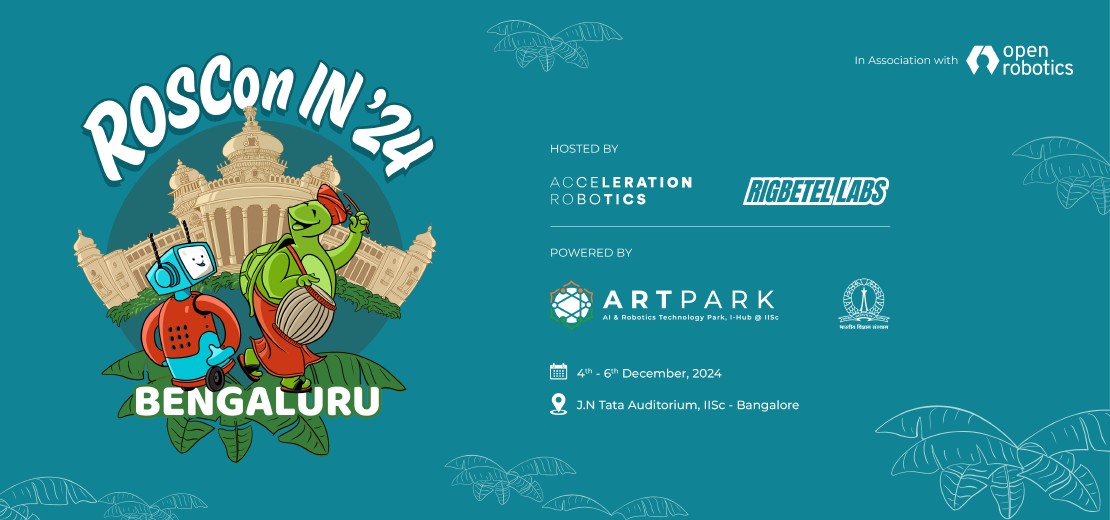
My RosConIN'24 (+GNOME Asia Summit) Experience
Last year, I missed ROSCon India due to exams and, honestly, had no idea what I was missing out on. This year, though, I made it, and it turned out to be more than I ever imagined. The two days I spent at ROSConIN'24 were nothing short of transformative, and this blog itself is a result of the inspiration I drew from the event.
Setting the Stage
The second edition of ROSCon India, following the overwhelming success of last year’s event with 750+ attendees, was hosted by ARTPARK at the Indian Institute of Science (IISc), Bangalore. This event brought together developers, hobbyists, researchers, and industry professionals to share, learn, and network over all things ROS (Robot Operating System).
What makes ROSCon India special is its resemblance to the international ROSCon, with a local flavor that emphasizes India’s growing influence in robotics and automation. It was heartwarming to see support from Open Robotics and the enthusiastic efforts of Acceleration Robotics, RigBetel Labs, and ARTPARK in organizing such an impactful gathering.
Day 0: Workshops Galore
The event kicked off with Workshop Day on December 4th. We could choose one out of three workshops, and I opted for the third one:
-
Workshop 1: Next-Gen Robotics Development with NVIDIA ISAAC, GenAI, and ROS – Organized by NVIDIA, this workshop offered a comprehensive dive into cutting-edge robotics development. Though I couldn’t attend it, the buzz from the attendees made it clear how enriching it was.
-
Workshop 2: Leveraging Zenoh as a ROS 2 Middleware Layer – Conducted by Zettascale Technology, this session explored Zenoh as an innovative middleware layer for ROS 2. It intrigued many participants and opened up discussions on its potential.
-
Workshop 3: ROS 2 Controls, Navigation, and Advanced Communication Study – Organized by ARTPARK, this was my pick! A deep dive into ROS 2 controls, navigation, and communication felt perfectly aligned with my interests. The hands-on experience and insights I gained were invaluable.
Day 1: A Conference to Remember
December 5th began with registrations and a warm welcome address by the organizers, setting an enthusiastic tone. Some highlights from the day included:
- Keynotes: Geoffrey Biggs (CTO, Open Robotics) and Yadunund Vijay (Intrinsic) discussed the state of Open Robotics in 2024, followed by Jigar Halani from NVIDIA sharing insights on robotics development.
- Inspiring Talks: From Yuvraj Mehta’s session on RoboGPT to Sarvesh Kumar Malladi’s insights on Universal Robots’ ROS2 features, each talk added depth to the learning experience.
- Industry Focus: Anish Dalvi from TCS delved into automotive protocols, while Somdeb Saha highlighted retail automation with ROS. Both sessions demonstrated the vast industrial applications of ROS.
- Panel Discussion: The day ended with an engaging panel on cracking the product-market fit in robotics, featuring founders and investors sharing valuable insights.
Day 2: Deep Dives and Future Directions
December 6th brought more enlightening sessions, including:
- Keynote by Angelo Corsaro (ZettaScale Technology): An in-depth look at Zenoh as an alternative middleware layer for ROS 2.
- Technical Sessions: From Ajay Sethi and Prateek Nagras introducing the Robotics Application Stack to Nidhi Choudhary’s integration of physics-based neural networks with Gazebo, the variety of topics covered was astounding.
- Fireside Chat: The event concluded with a thought-provoking discussion on the future of ROS, featuring Geoffrey Biggs, Yadunund Vijay, and Angelo Corsaro.
Networking and Personal Highlights
One of the most fulfilling aspects of ROSConIN’24 was the chance to meet incredible people. I connected with alumni from my college, including Aryan Jaguste and Jatin Vera, whose experience in robotics left me inspired. I also met many other professionals who have been in this field for years, generously sharing their knowledge and encouraging me to keep learning and experimenting.
It was this vibrant exchange of ideas and stories that inspired me to start this blog. ROSConIN’24 wasn’t just a conference; it was a catalyst for my growth in the robotics domain.
A Big Shoutout
A massive thanks to all the companies and individuals who made this event possible, including Acceleration Robotics, RigBetel Labs, ARTPARK, NVIDIA, Zettascale Technology, Tata Consultancy Services, Universal Robots, and many others like Autodiscovery, Botsoverkill, Bullwork, Golain, I-Hub Jodhpur, IISc, Kikobot, Nawe, Neuralzome, Thundroids, Vicharak, Virya, and xTerra.
I recently shared a post on LinkedIn about a bunch of interesting startups I came across — not a promotion, just something I felt like doing for the community. These were all booths or projects I ran into during the event, and I wanted to highlight them for the sheer variety and effort behind them.
Among all, Vicharak stood out the most to me.
They’re building:
Vaaman – an FPGA-based board that’s capable of running AI/ML workloads. That’s not something you see every day in the Indian embedded space.
Axon – a single-board edge computer, built for compact high-performance tasks at the edge.
Their work hits that sweet spot between hardware and intelligence — definitely something to keep an eye on.
If you’re into edge compute, FPGAs, or just curious about what’s brewing in the local hardware scene, check them out: vicharak.in
Closing Thoughts
Attending ROSConIN’24 was a valuable experience that offered more than just technical insights. It provided a sense of community and highlighted the shared interest in robotics and automation among participants. For anyone interested in these fields, the event presents a great opportunity to learn, connect, and engage with others who share similar interests.
The following day, I attended the GNOME Asia Summit in Bangalore. This event offered another perspective—bringing together open-source contributors and Linux enthusiasts. It was a great chance to learn from the broader open-source ecosystem and understand its ongoing contributions and challenges.
Navigating Bangalore came with its own set of challenges, especially when it came to traffic. However, the energy of the city and its role as a major tech hub made the overall experience worthwhile. Attending two major conferences back-to-back proved to be both intensive and rewarding, offering a condensed but enriching exposure to various communities.
Interactions at both events further encouraged me to explore robotics and open source more deeply. It was during ROSConIN’24 that the idea of starting this blog took shape—as a way to document and share ongoing learning and projects in a more structured format.
Interestingly, I was one of the few people there who received an ID with a handwritten name instead of a printed one. A few people were even unsure if it was genuine—which honestly just added to the uniqueness of the experience.
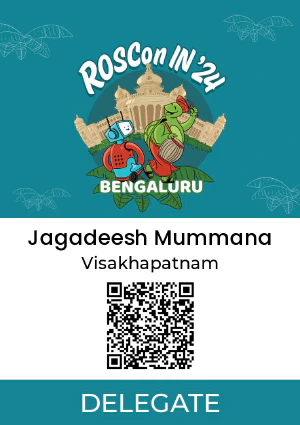
Related Posts
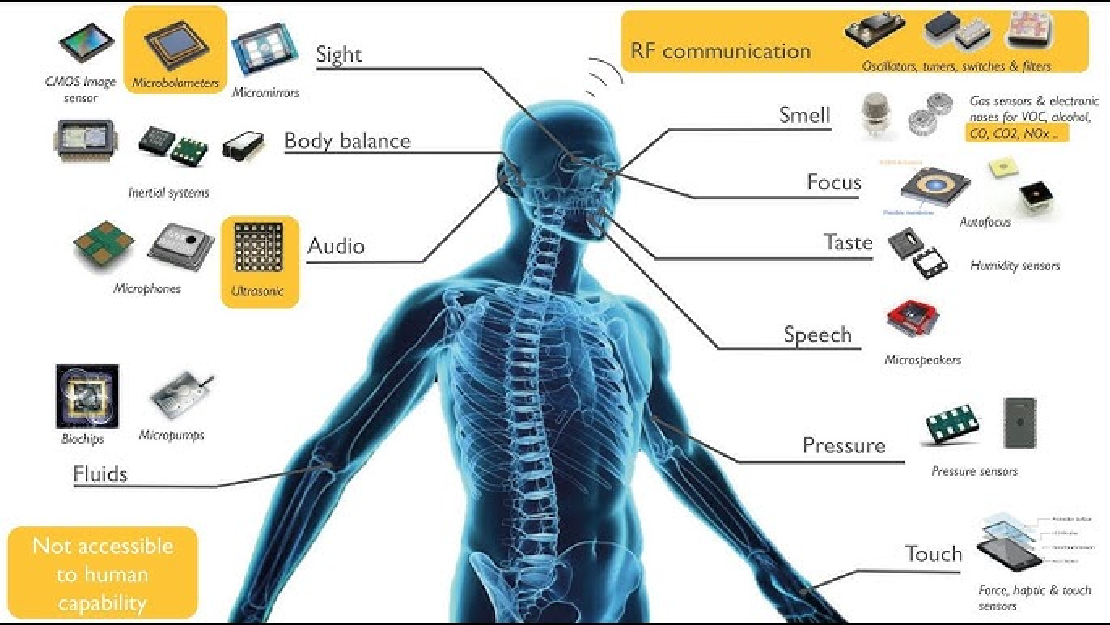
Sensors in Robotics: How Ultrasonic, LiDAR, and IMU Work
Sensors are to robots what eyes, ears, and skin are to humans—but with far fewer limits. While we rely on just five senses, robots can be equipped with many more, sensing distances, movement, vibrations, orientation, light intensity, and even chemical properties. These sensors form the bridge between the digital intelligence of a robot and the physical world it operates in.
Read more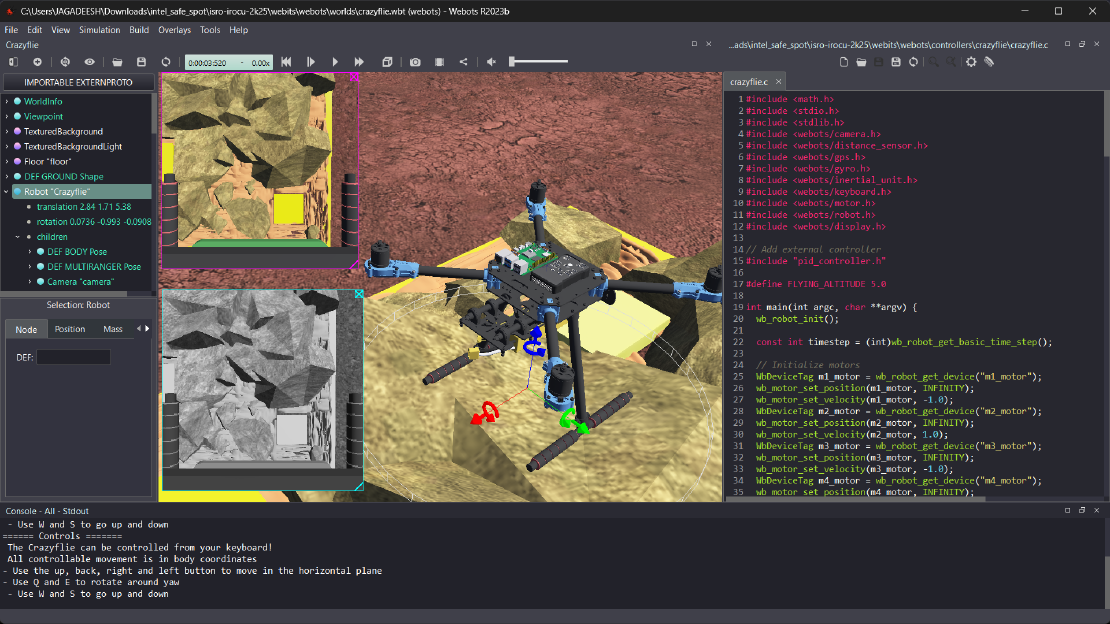
Debugging a Robot In Simulation Before You Burn Wires
Hardware does not come with an undo button. Once you power it on, mistakes—from reversed wiring to faulty code—can result in costly damage. Motors may overheat, printed circuit boards (PCBs) can be fried, and sensors may break. These issues turn exciting projects into frustrating repair sessions. The autonomous drone shown above, designed for GNSS-denied environments in webots as part of the ISRO Robotics Challenge, is a perfect example—where careful planning, testing, and hardware safety were critical at every step
Read more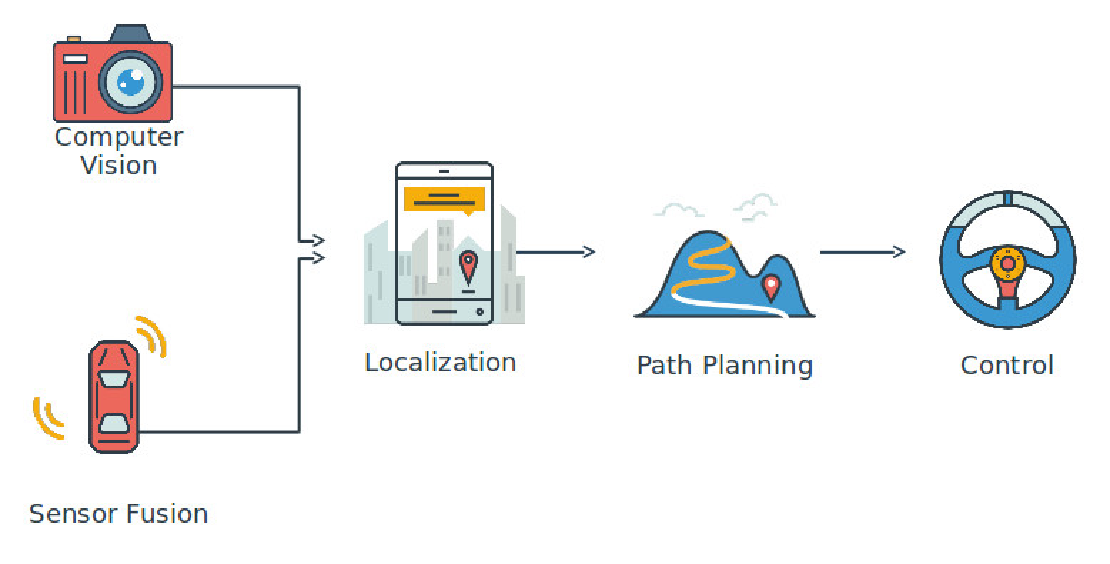
Computer Vision vs. Sensor Fusion: Who Wins the Self-Driving Car Race?
Tesla’s bold claim that “humans drive with eyes and a brain, so our cars will too” sparked one of the most polarizing debates in autonomous vehicle (AV) technology: Can vision-only systems truly compete with—or even outperform—multi-sensor fusion architectures?
Read more